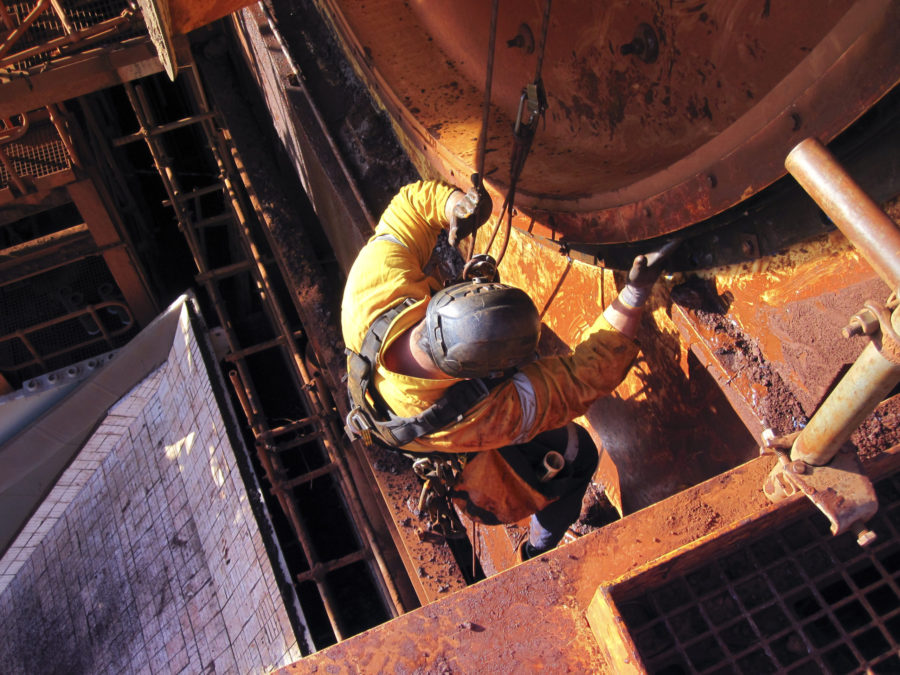NASA takes asteroid mining seriously; funds viability study
Only five months after Google’s billionaire co-founders and filmmaker James Cameron officially launched their asteroid mining focused Planetary Resources company, the U.S. National Aeronautics and Space Administration (NASA) is funding a study to evaluate how viable the endeavour really is.
According to Universe Today, space architect Marc Cohen will lead the research project, with the help of two trajectory and robotics specialists and a mineral economist.
Their jointed proposal, says NASA, will look at the fundamentals of some major questions facing the asteroid mining industry, such as the most suitable kinds of spacecraft needed, as well as the technology and business model required for a space mining project.
The team will design a mission, using a robotic miner that would launch from one of the Earth-Moon Lagrange Points (EMLP) and intercept a near Earth asteroid, mine its resources on site, and then return to the EMLP to eventually ship the mined materials to Earth.
By designing a mission, the study may be able to determine whether there is a business case for asteroid mining, but Cohen himself is sceptical of finding a positive answer to that question.
Asteroids are rich in valuable minerals. An M-type asteroid, the third most common type, just one km diameter could contain more than two billion tons of iron ore and nickel. And, notes the company, they are not very far away.
In February this year, the heads of the world’s five largest space agencies gathered in Canada to discuss interplanetary mining, particularly the viability of mining the Moon.
Several countries, including China, have already expressed an interest in mining the moon’s resources and a number of prototype machines already exist.
However, the question of who owns asteroids and other celestial bodies remains unanswered.
{{ commodity.name }}
{{ post.title }}
{{ post.date }}





3 Comments
Cole Deringer PE
Does anyone really think that NASA or any other governmental agency can realistically evaluate the economic viability of mining off planet? For off planet mining to become viable, private entrepreneurs who understand mining and mineral economics will need to develop the industry.
Dylan McFarlane
The United Nations owns asteroids and the moon, as governed by the Outer Space and Moon treaty, respectively. They are the “Common Heritage of Mankind” similar to Antarctica and the Open Seas and the Atmosphere. Mining is not denied, but all work and profit is (in principle) to be shared with developing countries for the common benefit of mankind.
These issues have mixed results. Climate change legislation have been failures, but open seas, CFCs, and Antarctica have been relatively successful. But I don’t see how a rosy-eyed prospectus could ever possibly fund such a high-risk venture just for the purpose of profit redistribution…
Michael D. Campbell
Cecilia,
Good
to see your article on the growing interest in off-world mining. The
Astrogeology Committee of the AAPG has been working on a Memoir on the subject
over the past three or four years. It will be published in the next few months.
We
especially support NASA’s interest in conducting an economic assessment of such
a venture, but we are supporting the view that industry should be taking the
lead role. We are concerned that if NASA does the number crunching, the
resulting high cost of a government-sponsored project will not represent
realistic conditions and costs. This may reduce the enthusiasm in such
projects, even within industry.
We
were thinking that if you were to do a follow-up article, after bringing the
need for industrial involvement in such projects to NASA’s attention and to
industry (i.e., Lockheed, Boeing, Planetary Resources, the Virgin Group, and
some the larger mining companies, etc.), perhaps such a cooperative study will
be more meaningful. NASA will say, of course, that they always involve industry
but that is more like a contractor-subcontractor relationship where NASA makes
the decisions. Yes, NASA’s years of experience are important, but an economic
basis should be incorporated by having a consortium of industry take the lead,
perhaps with NASA on the Board, etc. Or, perhaps NASA should be split-up into a
funding agency of the U.S. Government and a privatized consortium of research
and development group (national and international) consisting of all
participating industries, who provide most of the funds.
There
are other important decisions to be made as well regarding the impact of
producing platinum, for example, from off-world sources on the current platinum
market and associated industries, both positives and negatives. Others include
how do we get into orbit and bring concentrates back to earth economically,
since these items make up a large part of the costs of off-world activities.
Another important item is protecting human health while off-world, since robots
cannot do all the work.
In
our Memoir 101, we have attempted to treat many of these items and many more.
My group has produced the final Chapter 9. A link to the preliminary press
release is included below:
http://www.i2massociates.com/downloads/AAPG_Memoir_101-July18-2012.pdf
Although
we may be a decade or more away from serious off-world mining that will support
humans in beginning to expand into the solar system, etc., discussions have to
begin now, which, when we started on Memoir 101 a few years ago, there was only
a glimmer of interest. It is now growing, but the interest must be sustained by
more than amateur astronomers, gear-heads, and the space industry, as it exists
today. The mining industry should be involved at the outset of such
considerations, notwithstanding there current economic commitments to current
and planned operations on Earth.
We
appreciate your interest in the subject as we begin to consider when, not if,
off-world mining operations will make dollars and sense….